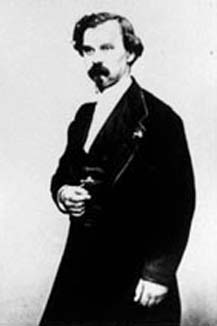Jules Antoine Lissajous
Appearance
Jules Antoine Lissajous | |
|---|---|
 Jules Antoine Lissajous, date and photographer unknown | |
| Born | 4 March 1822 |
| Died | 24 June 1880 (aged 58) Plombières-les-Dijon, France |
| Nationality | French |
| Known for | Lissajous figures |
| Scientific career | |
| Fields | Physics |
Jules Antoine Lissajous (French pronunciation: [ʒyl ɑ̃twan lisaʒu]; 4 March 1822 in Versailles – 24 June 1880 in Plombières-les-Dijon) was a French physicist, after whom Lissajous figures are named. Among other innovations, Lissajous invented the Lissajous apparatus, a device that creates the figures that bear his name. In it, a beam of light is bounced off a mirror attached to a vibrating tuning fork, and then reflected off a second mirror attached to a perpendicularly oriented vibrating tuning fork (usually of a different pitch, creating a specific harmonic interval), onto a wall, resulting in a Lissajous figure. This led to the invention of other apparatus such as the harmonograph.
See also
[edit]References
[edit]External links
[edit]- O'Connor, John J.; Robertson, Edmund F., "Jules Antoine Lissajous", MacTutor History of Mathematics Archive, University of St Andrews
